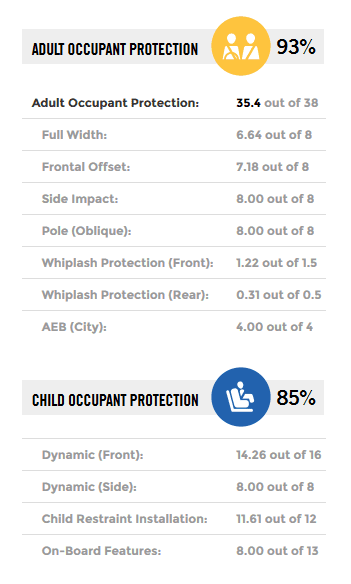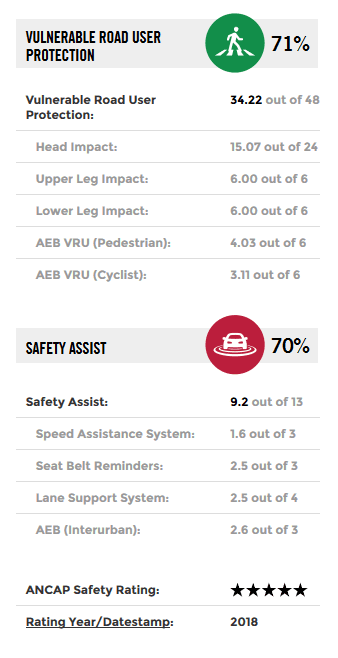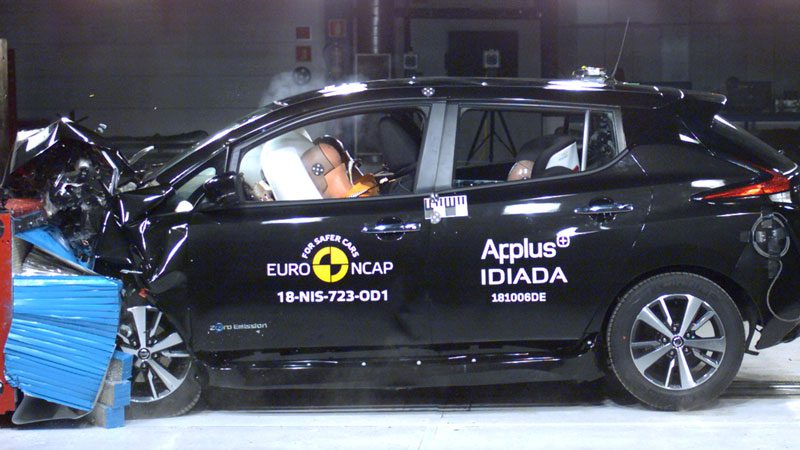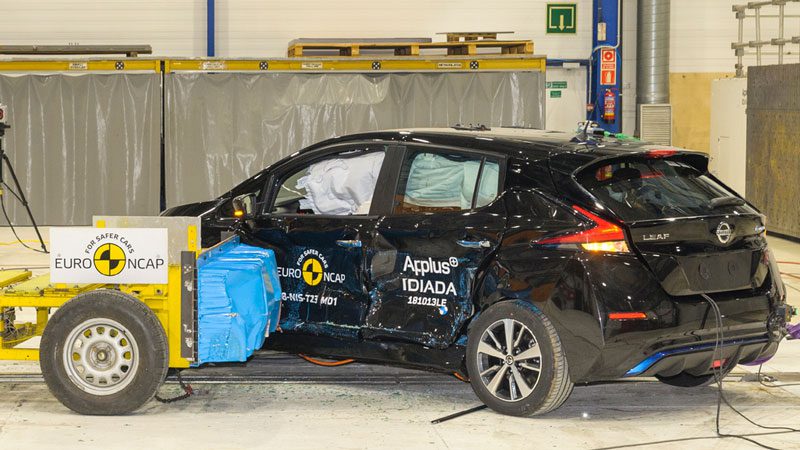The new all-electric Nissan Leaf, which is due to hit the Australian market in August of this year, has received the maximum safety rating from Australia’s new car safety assessment body, ANCAP.
The Leaf, which last year was given an upgraded 40kWh battery taking its driving range up to 315km on the NEDC cycle (in real world driving conditions this is expected to be more like 240km), has been recognised in the US as the cheapest electric car to own over a 5 year period.
As one of Australia’s most affordable electric cars (it has been slated to start at just under $A50,000 before on road costs when it goes on sale in a few months), the new safety rating will be another drawcard for drivers looking for safety as well as reduced emissions and running costs.
The rating, which was officially posted on the ANCAP website on Tuesday, applies to the new 2019 Leaf that will be introduced in Australia as well as the 2018 Nissan Leaf that has been available in New Zealand since last year.
With a 100% rating for side impact for both adults and children and 100% rating for pole (oblique) impacts (this is not measured for children), the Nissan Leaf achieved a 95% overall rating for adult occupants and 85% overall rating for child occupants.
Other ratings for occupants are listed on the ANCAP website as follows:

“The rating for the Nissan Leaf provides consumers and fleet buyers with another safe electric vehicle option,” said ANCAP boss James Goodwin in a statement.
Dual frontal, side chest-protecting and side head-protecting airbags come as standard with the new Nissan Leaf, and ANCAP’s rating also gives the Nissan Leaf full points for upper and lower leg impact, totalling 71% rating for “Vulnerable Road User Protection”.
Safety features, which in the Nissan Leaf include autonomous emergency braking (AEB), lane assist and blind spot monitoring, did not score so well.
ANCAP gave the Leaf just 1.6 out of 3 for speed assistance, and while the AEB system scored relatively well for interurban driving (2.6 out of a possible 3), the overall rating for safety assist features was only 70% – just enough to earn a full star rating according to ANCAP standards.
“Good levels of protection were observed for adult and child occupants, and performance of its lane keep assist and autonomous emergency braking systems was rated ‘Good’,” Goodwin said.

“We are justifiably proud of Nissan LEAF and we are delighted to receive this five star ANCAP safety rating,” said Nissan Australia’s managing director Stephen Lester in a statement to the press of the new Leaf’s gold star achievement.
“Nissan LEAF is packed with a strong assortment of active and passive standard safety that brings peace of mind to everyone that is considering this vehicle as their next new car purchase,” Lester said.

Bridie Schmidt is associate editor for The Driven, sister site of Renew Economy. She has been writing about electric vehicles since 2018, and has a keen interest in the role that zero-emissions transport has to play in sustainability. She has participated in podcasts such as Download This Show with Marc Fennell and Shirtloads of Science with Karl Kruszelnicki and is co-organiser of the Northern Rivers Electric Vehicle Forum. Bridie also owns a Tesla Model Y and has it available for hire on evee.com.au.



